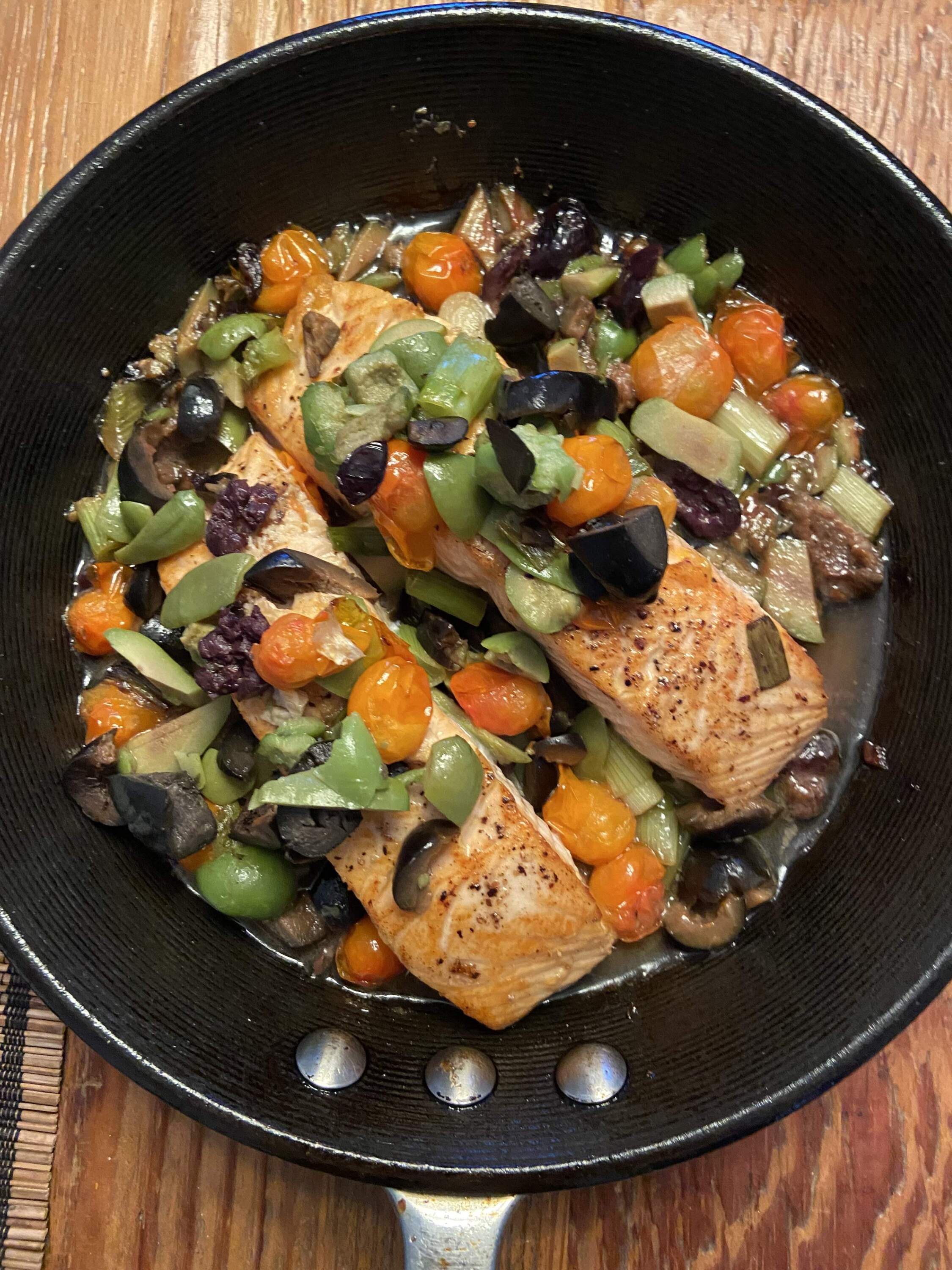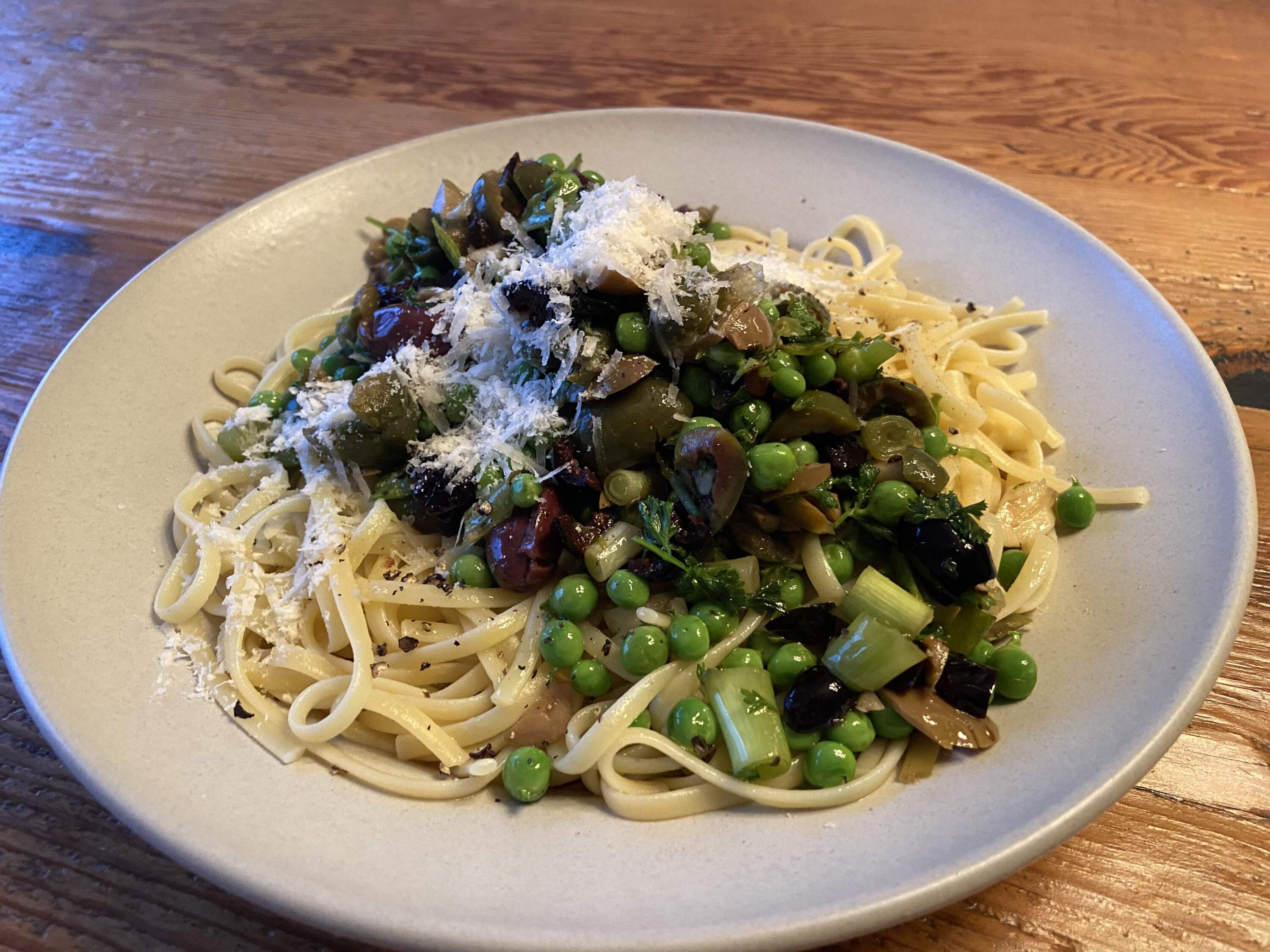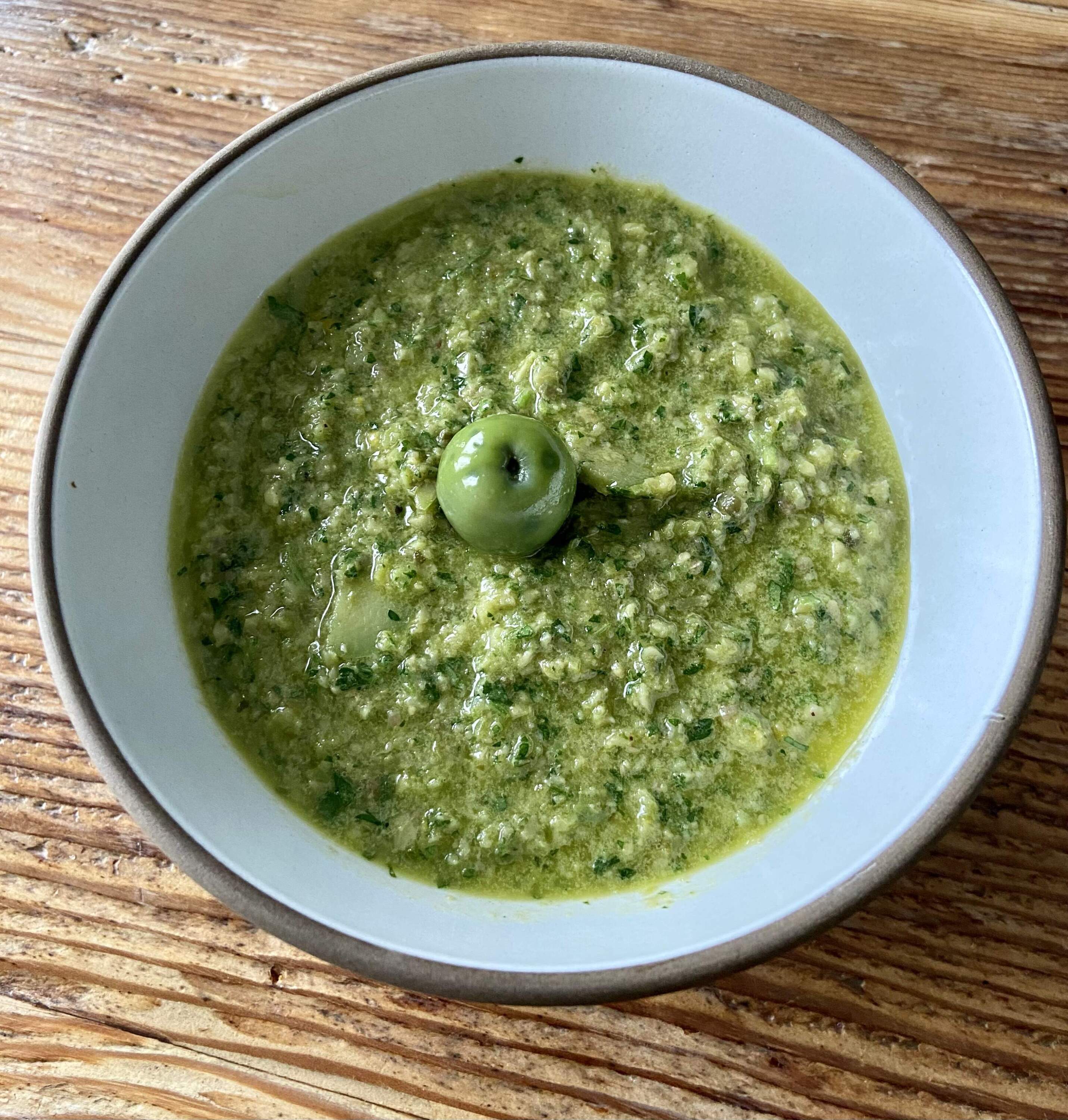Advertisement
Embrace olives: Recipes and tips for cooking with different varieties
Resume
You know the game you play where you have to name 10 foods you would bring to a desert island? When tasked with answering this complex question I always choose olives as one of my forever foods. They are meaty and briny, salty and complex. I love nearly every variety of olives and rely heavily on the pressed juice of the olive in all my cooking. (See my report on olive oil here.)
Technically a fruit (with a single stone/pit inside), olives are quite good for you. They are packed with fiber and iron and full of antioxidants.
Until recently, many Americans were almost exclusively acquainted with those pitted canned olives. (Growing up we took enormous pleasure in placing pitless black olives on our fingers and turning them into finger puppets. A childhood ritual to be sure.) But you can now find dozens of olive varieties from all over the world in grocery stores and specialty food shops. Look for new varieties because each olive has its own unique texture, color, and flavor profile.
A guide to a few popular varieties of olives:
- Arbequina: A Spanish variety frequently used pressed to make oil, but also delicious as a snacking olive. Dark purple in color with a fruity, almost nutty and buttery flavor.
- Castelvetrano: From Sicily, these green olives are buttery, meaty, and slightly sweet.
- Cerignola: These big olives, also from southern Italy, are particularly meaty, and are generally green but also can be red, purple, or black, depending on how long they were ripened.
- Gaeta: Another Italian variety, these wrinkled deep purple to black olives are salty, sweet, and quite tender.
- Kalamata: Oval or almond-shaped, these dark purple olives come from Greece. They are quite salty and a traditional ingredient in a Greek salad.
- Manzanilla: A green olive often stuffed with pimentos from Seville, Spain. They are slightly smoky and nutty.
- Mission: An American variety, grown mostly in California.
- Moroccan: Small and crinkled, these olives are salty and a rich black color.
- Nicoise: Shaped like a small egg, these purple French olives are mild and briny. They are the traditional olive in a Nicoise salad.
Olive tips:
- Olives are inedible when picked from the tree. They need to be cured. There are several methods for curing with oil, brine (salt), dry salt, etc. Each curing method produced a different type of texture and flavor.
- The color of an olive tells you how mature it is. Green olives are young and picked at the start of the harvest (generally in early fall). As the olive ripens on the tree it turns color and starts to darken — green, red, brown, purplish black, and then black. Black olives are picked the latest in the season so they ripen on the vine.
- Don’t use an excess of salt when cooking with olives as they are briny and tend to be quite salty
Pitting olives:
Place an olive on a clean work surface and use the flat side of a knife and smash down on it. The meat should split in half and the pit should be released. Some olives do not like this process (particularly dried or cured olives). Alternatively, you can use a small sharp knife and cut around the olive pit to release all the meat and discard the pit.
Roasted salmon with three olive, scallion and cherry tomato topping
Like a cross between a topping and a sauce. I tried this on salmon filet but it would be equally delicious (and at home) on grilled fish or shrimp, steak lamb chops, asparagus or toast points.
Serves 2 to 3.

Ingredients
The olive topping/sauce:
- 1 ½ tablespoons olive oil
- 2 large scallions, ends trimmed and cut into ½ inch pieces
- Pepper and a touch of salt
- 1 cup black and green olives combined (I used green olives, black olives and oil cured black olives, pitted and coarsely chopped)
- 1 cup cherry tomatoes, cut in half or left whole if small
- ⅓ cup dry white wine or vermouth
- 1 ½ tablespoons butter
The salmon:
- 1 tablespoon olive oil
- 1 pound salmon filet cut into two pieces
- Pepper
Instructions
- Preheat the oven to 400 degrees.
- In a large ovenproof skillet, heat the oil over medium-high heat. Add the scallions and cook for 2 minutes, stirring. Add pepper and just a touch of salt. Add the olives and cherry tomatoes and cook, stirring for 2 minutes. Raise the heat to high and add the wine; cook 3 to 4 minutes or until the wine is bubbling and some of it has cooked off. Remove from the heat and add the butter; once it melts into the sauce place the sauce in a bowl on the side.
- Heat the same skillet over high heat. Add the 1 tablespoon olive oil and heat it for 30 seconds. Add the salmon filets, skin side up and cook for 2 minutes. Gently flip the salmon and cook for another minute. Spoon the sauce on top and place on the middle shelf of the preheated oven. Roast for 5 to 8 minutes (depending on the thickness) or until a kitchen knife inserted in the center comes out hot.
- Serve hot with lemon wedges.
Linguine with mixed olives, spring peas and parsley

This sauce comes together in the time it takes to boil pasta. I used a mixture of olives — black oil cured, green Castelvetrano, Kalamata, and green Cerignola. Use the best olives you can find and mix it up with green and black varieties. Look for fresh English peas or if it’s not yet pea season in your area, use high-quality frozen peas.
Serve 2.
Ingredients
- Salt for pasta water, and salt to taste for sauce
- 8 ounces (½ pound) linguine or spaghetti
- 2 ½ tablespoons olive oil
- 4 cloves garlic, finely chopped
- 4 scallions, ends trimmed and finely chopped
- 1 cup English peas (or frozen unthawed peas)
- 1 cup mixed olives, see note above, pitted and coarsely chopped
- Freshly ground black pepper
- 1 tablespoon butter, cut into small cubes, optional
- 1 tablespoon lemon oil or 1 tablespoon lemon juice
- ⅓ to ½ cup grated Parmesan cheese
Instructions
- Bring a large pot of salted water to boil over high heat. When the water is rapidly boiling add the pasta and stir; cook about 11 to 12 minutes, depending on the variety or until al dente.
- While the pasta cooks, heat 1 ½ tablespoon of the oil in a medium-large skillet over medium heat. Add the garlic and cook for 1 minute, stirring. Add the scallions and cook for another minute. Add the peas and cook for 1 minute and then add the olives, stirring everything together. Add ¼ cup of the pasta water and cook over medium-high heat for 2 minutes. (The pasta sauce helps to bind the sauce.) Season with just a touch of salt if needed, and pepper. If you want a “creamier” sauce add the butter and let it melt into the sauce.
- Drain the pasta and place in a serving bowl or on a serving plate. Toss with the olive and pea sauce and pour the remaining tablespoon of olive oil and lemon oil or juice on top. Toss half the cheese on top and serve the remaining cheese on the side.
Green olive tapenade

Tapenade, a specialty of France, combines olives with anchovies, herbs, olive oil, lemon, and garlic. There are endless variations of this Provencal spread, but I particularly like making tapenade with green olives. Here I blended pitted green olives with olive oil, anchovies, parsley, capers, garlic and lemon. Serve the tapenade with crackers topped with soft goat cheese, toss it on pasta, add a dollop to grilled meats and fish, a cooked artichoke, or use as a dip with raw or roasted or grilled vegetables. The tapenade will keep in a covered glass jar for at least a week.
Makes about 1 cup.
Ingredients
- 1 cup pitted green olives
- 5 anchovy filets, plus 1 tablespoon anchovy oil
- ⅓ cup fresh parsley, chopped
- 2 tablespoons drained capers
- 1 small clove garlic
- 1 to 2 tablespoon fresh basil, optional
- 1 tablespoon lemon zest
- 2 tablespoons lemon juice
- Pepper
- About ½ cup olive oil, plus 1 tablespoon for the top to preserve
Instructions
- Place all the ingredients in a food processor and pulse to get a thick paste — it doesn’t need to be pureed. Taste for seasoning. The tapenade won’t need salt due to the salinity of the olives, capers, and anchovies. If you’re making the tapenade ahead of time and want to keep it in the refrigerator for a few days, add about 1 tablespoon olive oil on top to seal in the flavors and help preserve it.
This segment aired on May 16, 2024.
